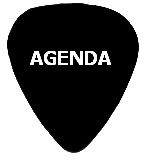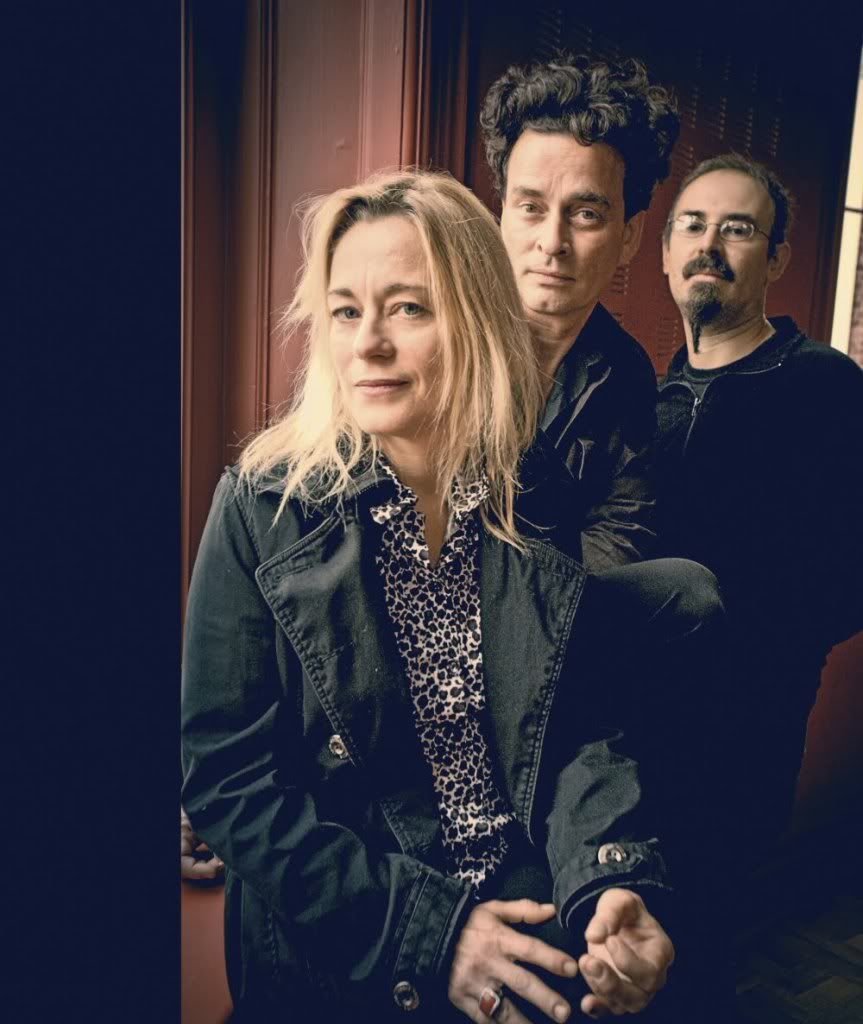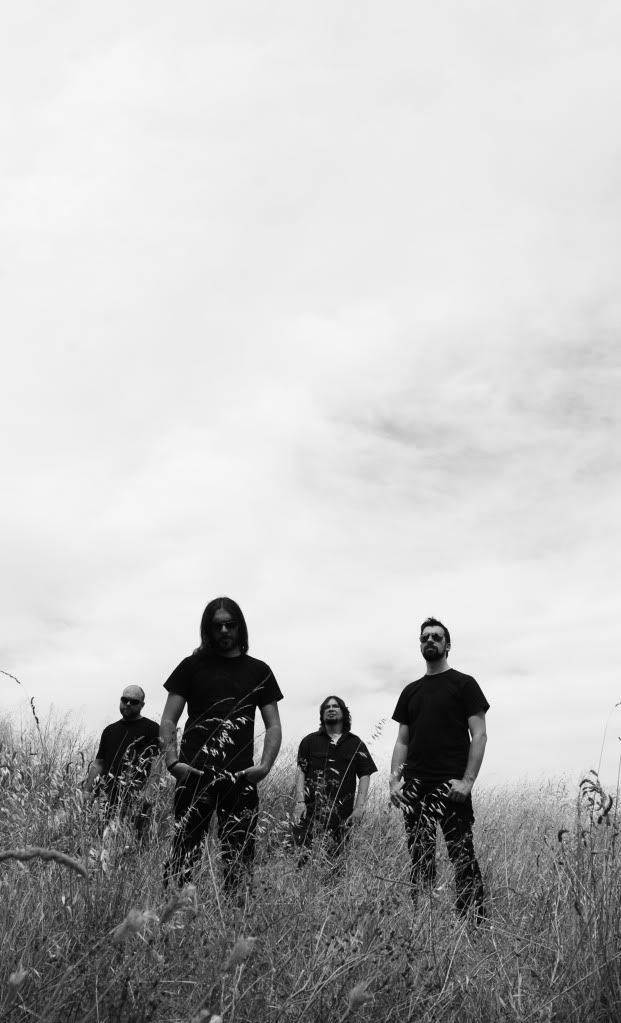
Mencionei ambos várias vezes, mas para quem não os conhece, critiquei o livro com as obras do Kasner
aqui e o álbum da Gammelsaeter
aqui. Segue agora uma entrevista entre os dois:
RG: The introduction to your personal profile on Wikipedia states: ”Stephen Kasner (born 1970) is a painter, illustrator, musician, photographer, graphic artist, and magician.”Which of the mentioned crafts do you regard as your major or preferred line of work? What choices or sacrifices did you make to develop and hone your major art form when you master so many?
SK: I don't really feel a differentiation between between any of these elements. All these forms are mediums utilized to accomplish many of the same goals. I do primarily consider myself a painter, first and foremost. Painting is the medium that I feel comes most naturally to me in my efforts to exorcise and transfer emotion and ideas.
RG: You master most trades in art – visuals and auditory. Is there a red line, a common denominator, for your expression in various mediums?
SK: Strange, odd, loving memory recall, including conscious experiences as well as lucid and sleep-induced dream states.
RG: Your art – paintings, photos and music – often decipher the expressions of nature, from frail beauty to dark horror. What emotional elements of nature inspire you?
SK: The entire Phenological order of nature inspires me, from resounding elements to the most delicate. The most succinct collision in nature that inspires me are moments of death and rebirth, and the activities in between.
RG: From nature, you seem to depict larger scenarios (universal collisions) or details (leaves, flowers) more often than the scaled perception most people have of the world (what we see in our field of vision or through the 50 mm lens: persons and things in their environment at a proportional size to ourselves). Considering the elements you choose to pull forth and depict, can you describe what your artistic perspective on the visual world is? And what elements of the visual world appeal most strongly to you?
SK: Most intensely, things which cannot be readily seen. I find most appealing things which are filtered through various lenses of dream and hallucination crossed with reality. I firmly believe in altered states of consciousness; I believe there is an infinite possible parallel-universal combinations beyond that which we consider our tangible, logical reality. Dream states are a perfect example of this thought. How many of us have had dreams whose sensations resonate much more intensely than our waking consciousness. Often, for me, I am able to recall minute details of dreams because of their sheer intensity. They are often like looking at life through a microscope, with sensations so magnificently enhanced. I liken intense hallucinogenic drug experiences to inspire the same type of magnification.
RG: Seeing your art, I often think of the cycles of life and death. Creation and destruction, rebirth. Could you tell more about your reflection on life cycles?
SK: These cycles are, after all, what we are made of, what the universe is composed of. I am often perplexed by tangible sensations of cycles. It is interesting to note that we can sense ourselves changing as we grow older. Sometimes this can be true on a day to day basis, if we pause long enough to allow awareness to seep in.
RG: Joy and horror. Light and darkness. Expansion and collapse. Your art often contain such pulsating, strong contrasts – and the results are stunning and beautiful. What, for you, is most beautiful about the contrasts of nature?
SK: I think it is astoundingly interesting to note that the wolf which can tear at an enemy out of fear or defense, or violently destroy for the sake of survival, is also equally capable of nurturing love. It protects its young with equal, yet opposite strength and demand. This contrast, I feel, can be applied to humans as well. We are all equally destructive yet protective and coveting. Sadly, this human instinct has become increasingly diluted with technology and fashion.
RG: The use of animals and botanical elements in your art speaks of an interest for nature, specifically for biology. I recognize features of species such as the Ibis (Threskiornis) and the Hummingbird (Trochilidae), and you have even depicted the birds along with their diet (nectar from the hibiscus flower). Your human shapes, with attention and detail to anatomical features, also speak of an interest for things biological. Do you have scientific training, or do you read biology and anatomy?
SK: Probably only marginally, or for reference. The closest thing I can attest to serious medical study is figure drawing and anatomical study of bones, muscles and their functions. I did spend time in school strictly studying these elements, and we did have to know and learn technical terminology of bones and muscle groups. Beyond that, in attempts to make connections within my work, I do research and seek out reference for certain things. Usually however, once I digest the information, I discard it from immediate consciousness, and let the memory or impression of the subject rise to the surface. My work is not intended to be a study on specifics within nature, but reflected connections of many things combined.
RG: You often paint birds. Particularly you have painted a study for a self portrait where a human body has a bird head – like Thoth, the Egyptian god with the head of the ibis bird. He was considered the heart and tongue of Ra as well as the means by which Ra's will was translated into speech. He has further been involved in arbitration, magic, writing, science, and the judging of the dead. I am sure there is no coincidence in your choice of symbols – what significance do birds and the man-bird shapes have for you?
SK: Nothing of such specific historical significance necessarily. And more perplexing, I really don't often know. These elements come to me often on an instinctual level, where it often takes a great deal of time and work to fully realize the meaning. I try to work as unconsciously as possible, so when these connections are made, the bird and human for example, I try not to question it or make any sensible corrections. I have painted several self-portraits that have no reference of, or specific representation of myself or what I appear outwardly. Many of these self-portraits were never intended initially to even be self-portraits, so to title them as such while I am working on them, or after the fact, can be a little mysterious even to myself. It does somehow make sense to me, obviously, or I wouldn't do it. These connections, like the bird and man, make sense to me on a spiritual, alchemical and occult level. They are magical workings more than they are paintings. The paint is only a means too exert some kind of mysticism, a lifelong magical work in progress.
RG: To create a painting – what steps do you go through, mentally and physically? Do you have an image of the finished result or motif in your minds eye when you stretch the canvas, or do you simply start and let the result reveal it self? Do you work at night, or in daylight? Do you work in silence or do you listen to music while you paint?
SK: These possibilities often change. I do rarely premeditate imagery, however. I rarely do sketches beforehand, unless the painting is intended to be for a specific purpose from the onset. Even then, if I do create sketches, I typically discard them, or simply do not reference them while I am in the painting process. It is more important that I have worked the idea out mentally, rather than to refer to a sketch specifically. Lately, my work schedule floats rather ridiculously. All time has been seeming to blur together- night and day- it has really become rather superfluous and unimportant. I tend to work extremely long hours, and when I am working on a large painting, or large series of paintings, I can work 20 hours straight for many days. It all depends on how the spirits are engaging. If things are good and the painting is flowing well, I work as long as I have to, until I know I must break from a piece or else cause some catastrophe.I do very often listen to music while I work. It helps to set a mood and mind frame for the emotions I am intending to work out.
RG: You have worked with musicians, creating cover art for music recordings. How do you transform the music to visual art? What element of the music is important for you to bring out? Do you discuss the meanings of the music with the musicians or get requests for themes, do you listen to the music to find the theme, or do you simply sense instinctually what is going to be right?
SK: I employ all of the above in varying degrees. Sometimes, I will have interaction with musicians about their work, other times I simply follow an emotional dialogue I am having with the music itself. Usually though, it takes ingredients of all these things to achieve the right balance and state of understanding the music enough to flow with confidence. Sometimes these elements work better than others, but if I am not attached to the music and its emotional components, I will have no interest in working with a particular band or musician, and simply won't collaborate. There must be a connection between the music and the artist. This is the sole purpose of the collaboration. If there is no symbiosis between my work and that which I am attempting to connect with, the attempt at conveying the spirit within will be moot.The core of how I actually transform the music into images is an almost Shamanistic principle. I certainly envelop myself within the music with repeated listening, allowing the center of the music's emotion to rise to the surface. For me, this occurs easily. I latch onto that and begin to see forms and images. From there it is sometimes like connecting the dots. Other times, it is a longer journey of trial and error, until the image or images I am creating resonate with the same emotional vibrations I sense from inside the music.
RG: You have had numerous solo exhibitions, published two books with your art, are soon to release a solo CD, and you sell paintings to collectors internationally – all this while being a young artist in your thirties. How did you accomplish so much in your adult years? What has been your drive to work so intensively and be so creative?
SK: Oddly, I often feel intensely behind in my goals! You put it very nicely, but when you are inside the growth, living with it on a daily basis, the sensation is that things happen very slowly. It is kind of like watching a child grow; the parents who raise the child do not notice the growth as intensely as the grandparent that sees the child less frequently. If you step back and look at the growth from a distance, it appears fantastic. From the inside, however, in perpetual examination of it, it seems less than phenomenal.I do work very long hours every day, usually seven days a week. I rarely take days off. If I relax too much, all I tend to think about is what I would be able to achieve if I got back to work. I have always had the sensation that life is grossly, horrifyingly short. I love life a great, tremendous deal, and am often concerned that I will not have enough time and youth and energy to execute all that I have challenged against myself. It is this love of life and aversion of death that is often the focus and dichotomy within my work.
 Chegou um dos dias mais esperados do ano, os Earth tocam esta noite no Porto num concerto organizado pela Amplificasom e a Lovers & Lollypops (mais uma bela noite em conjunto). Felizmente para nós e infelizmente para quem não comprou, o concerto está esgotado. Não digo que logo não haja uma ou outra desistência ou um ou outro bilhete a mais, mas é certo que teremos casa cheia para receber a banda d' O mestre Dylan Carlson.
Chegou um dos dias mais esperados do ano, os Earth tocam esta noite no Porto num concerto organizado pela Amplificasom e a Lovers & Lollypops (mais uma bela noite em conjunto). Felizmente para nós e infelizmente para quem não comprou, o concerto está esgotado. Não digo que logo não haja uma ou outra desistência ou um ou outro bilhete a mais, mas é certo que teremos casa cheia para receber a banda d' O mestre Dylan Carlson.














































 Ephel Duath - Through My Dog's Eyes [Earache 2009]
Ephel Duath - Through My Dog's Eyes [Earache 2009] Fennesz – Black Sea [Touch 2008]
Fennesz – Black Sea [Touch 2008] Gnaw - This Face [Conspiracy 2009]
Gnaw - This Face [Conspiracy 2009] Khanate – Clean Hands Go Foul [Hydra Head 2009]
Khanate – Clean Hands Go Foul [Hydra Head 2009] KTL – IV [Mego 2009]
KTL – IV [Mego 2009] Mono - Hymn To The Immortal Wind [Conspiracy 2009]
Mono - Hymn To The Immortal Wind [Conspiracy 2009] Wolves In The Throne Room – Black Cascade [Southern Lord 2009]
Wolves In The Throne Room – Black Cascade [Southern Lord 2009] Zombi - Spirit Animal [Relapse 2009]
Zombi - Spirit Animal [Relapse 2009] Zu - Carboniferous [Ipecac 2009]
Zu - Carboniferous [Ipecac 2009]














































.jpg)































